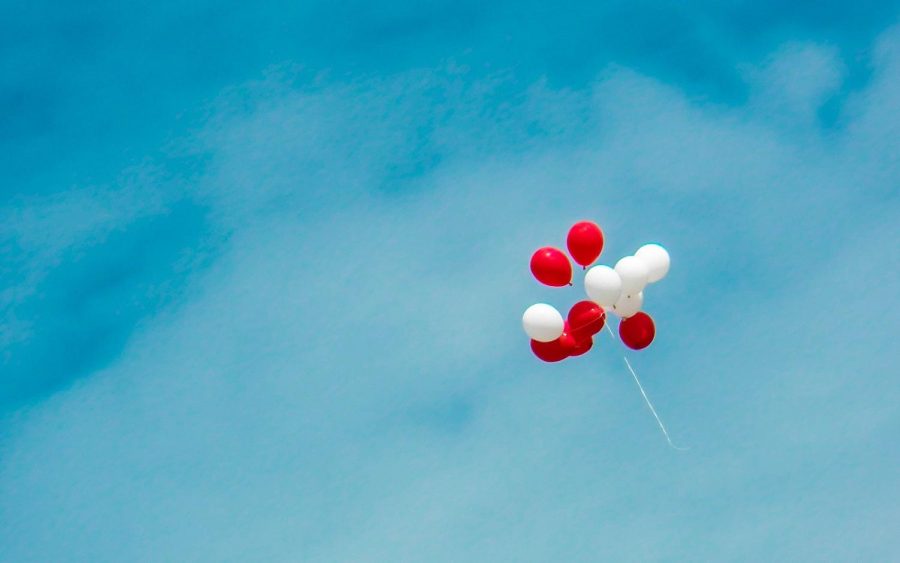Ingested and Entangled: How Harmful Can a Balloon Really Be?
Picture this: it is your graduation. You have been working for the last four years to walk on stage and receive your diploma.
It is finally over. Friends and family gather together to celebrate the beginning of a new chapter through the release of balloons.
You sit back and watch with a smile as balloons of all the colors of the rainbow float up into the air. Did you stop and think about what that could do to the environment?
You didn’t, did you?
My Personal Perspective:
After I graduated high school, we had sort of an afterparty. Everyone was so excited to be given their own balloon to celebrate the ending of high school and moving on to college.
As I was given my yellow balloon, I looked to my left. We were all standing right next to the Reservoir in Jackson. When I looked to my right, I saw everyone else was excited to be a part of this celebration.
I didn’t release my balloon that day because I knew exactly what my one little balloon could do.
I am just one person. However, I know that by not releasing my balloon, I saved at least one life that day. I even managed to convince several of my peers about this issue and they did not release their balloons either.
The problem is that once you have released a balloon into the environment, it is a danger to every animal it comes into contact with.
According to a report by the Ocean Conservatory, balloons are one of the top five dangers to animal life in both entanglement and ingestion. While balloons are small in themselves, they generally have a string that can be tangled up and suffocate marine mammals.
Need more proof?
The Real Danger of Releasing Balloons:
According to Dr. Solangi, the Director of the Institute of Marine Mammal Studies (IMMS), balloons can take anywhere from 50 to 100 years to decompose. These balloons can easily be mistaken as jellyfish for sea turtles or food for fish.
Fish are not the only animals affected by balloons. In fact, any bird or land mammal may also think it is food and eat it.
After they eat it, he says that it will block the stomach. As it gets digested, toxins from the plastics can enter the bloodstream and cause disease. Both of these things can kill all sorts of marine life. If it doesn’t kill it, the toxins can be passed through the food chain to ultimately humans.
IMMS has its heart set on preserving all sorts of marine life that are affected by plastics such as balloons. For more about IMMS’s conservation efforts, see their website here.
Why does this matter to us at Delta State:
We are 300 plus miles away from the beach, why does this matter?
Releasing balloons here in Cleveland can have disastrous effects on the environment around us. Not only that, it can travel all the way to the ocean. Dr. Solangi says that balloons can “come through rivers downstream or fall into the lake. It all leads to the ocean.”
Another source by The National Oceanic and Atmospheric Administration claims that “In 1998, a balloon released at the Olympics in Nagano, Japan, landed in Los Angeles just 49 hours later, a distance of approximately 5,300 miles.”
Those 300 miles to the ocean do not seem that far in comparison, do they?
Potential Alternatives:
So, you still want to celebrate with family and friends? That is completely understandable. I will admit that there is something satisfying about watching balloons fly higher and higher into the air.
However, that feeling cannot be stacked against the dangers to wildlife.
While there is no such thing as a biodegradable balloon, there are so many other things that we can do that won’t harm the environment.
Here is a list of five things that we can do to celebrate instead of releasing balloons.
- Blow bubbles
- Wave flags and streamers
- Fly a kite
- Use cut up leaves as eco-friendly confetti
- Plant a tree or flower
Imagine if every time someone celebrated, they planted something. The world would be a lot cleaner and greener.
It does not take much to improve the environment. We can help in little ways. As for my moral dilemma, I refused to let that yellow balloon fly away. After I popped my balloon, I put it in my pocket until I could get to a trash can.
This problem has a simple solution. Just quit releasing balloons into the environment.

Hannah Alley is a sophomore at Delta State, and this is her first semester with “The Delta Statement.” She is going for a degree in Secondary English...



